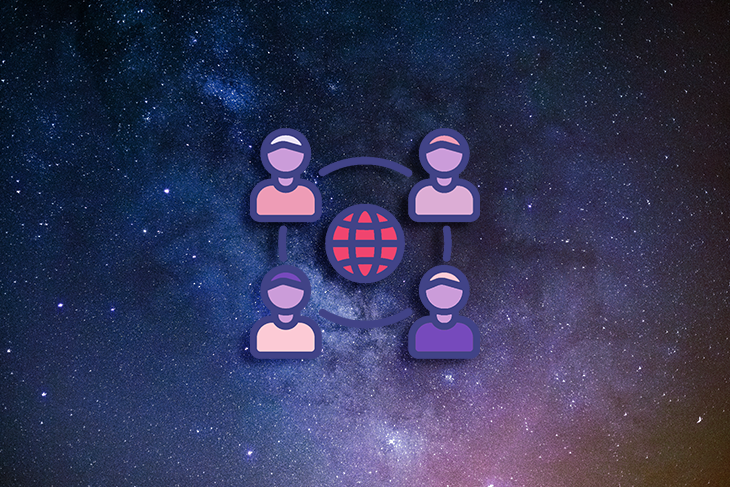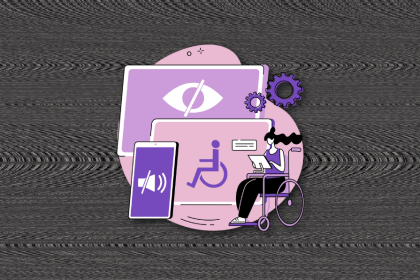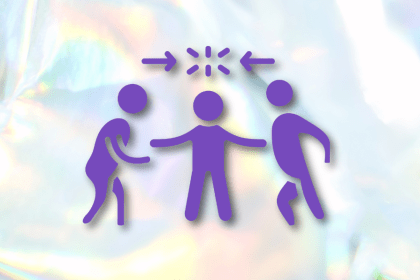With the advance of technology and the surge of many startups and digital companies, the demand for B2B services is increasing day after day — but do you know how to create products that really solve other business problems? Do you know how to build the perfect proposal that will just fit exactly what your target business is looking for?

Well, that’s when we incorporate UX design, understanding the importance of knowing users’ pain points, needs, and goals.
We have several tools available to comprehend users, and among them, we have personas, which can help us to gain insights and empathize with prospective clients.
Knowing your user can be even more crucial when it comes to B2B companies.
While building for B2B products, you should keep in mind not only the individuals (as you would when you build for B2Cs) but also the business as a whole and how the product you are building will affect both extensively.
You should gather insights about business structure, processes, and workflows; this information can be used to create a user experience that is specifically tailored to a business.
If you are building a digital product, it’s imperative you have a good knowledge of who will be using your product before you sell it.
In order to create a persona, you will have to segment your customers and get to know them in depth. It is not enough to know their basic demographics and problems; you will need to go through real research, and if possible, go to their offices, watch their workflow, and talk with them. This will be the better way of researching users when it comes to B2B.
Dropbox (a well-known cloud storage and file-sharing platform) has created many personas, such as IT administrators and project managers. They used the information and insights from these personas and research to inform the specific design of features and functionalities that were tailored to the specific needs of these users.
For example, they used their personas to create a feature called “teams space” (that allows businesses to create shared workspaces for specific teams or projects). This feature was just created because they knew through close research that project managers were struggling to keep track of files and documents across multiple teams and projects.
You can follow Dropbox’s example, creating personas through research and using them to inform the design of product features, which can greatly enhance user experience and drive the success of your product.
An enterprise persona is similar to a B2C persona, but it is very important to have in mind that when you are dealing with an enterprise, you will need to establish a long-term relationship from the start.
You cannot expect an enterprise to buy from you based on emotion, short-term solutions, or market impulsions; you need to settle your business strategy for analytical decisions and long-term relationships.
Why I am saying that? Because you will need to learn your product persona’s intentions and what would fit the partnership and experience they are searching for, not only for the moment but also for how they will benefit in the long run. Enterprises are not merely interested in understanding your product features and functions. They are also looking for something that can address a specific challenge or seize a potential opportunity.
So when it comes to creating a business-to-business persona, you should first understand the type of business you’re targeting, what their struggles are, what solutions they have already tried, and most importantly, you should be attentive to their goals.
Once you understand your target business(es), it is time to start segmenting your personas by focusing on individual users inside the enterprise. In the next section, we’ll go over how to understand this individual’s struggles and goals and how it matches with the business objectives.
Here, you will start from the basics. Maybe you already have your segmented personas, but if you don’t, it is very simple.
You just need to separate your customers based on similarities, and you can start from the data you already have.
Gather data about your target audience through various research methods, such as surveys, interviews, focus groups, and online analytics tools. Although I would recommend always talking directly with users when it comes to B2B, you are free to use any research techniques.
Use this data to identify patterns and insights about their behavior, needs, preferences, and pain points.
Next, you should use the data gathered to create a detailed persona that represents a typical customer for the enterprise. Basically, you will analyze the similarities between the people you interviewed and create a single persona to represent each group.
The persona should include information such as:
Always gather the information that will better achieve your goal. For instance, maybe it’s important to know how many times this persona does business trips per year because your product can provide some impact on that. Don’t stay only with the basics.
In a minute, I will give you an example of how to characterize the individuals at a business. But before you ask why the personas we are creating are individuals and not examples of a company, let’s remember that we are talking about a user experience, which means you have a product that another business will buy but the people from that business will be the ones using it. Normally, this company will want to buy a product that will fit their employees’ workflow and needs.
For example, I used to work for a company where a SaaS business wanted to sell us their product. The person in our company with the purchasing power wouldn’t follow through before the employees who would be using the software had tested it and approved it.
So, remember: in UX, we want to provide a great experience for the final users of a product, and if you are delivering to an enterprise, you are still delivering to individual people.
The idea here is that your product needs to fit not only a company, but it has to match exactly what is going on inside, what their employees are struggling with, and what the best solution is to these pain points.
In a report from DemandGen, 71 percent of B2B buyers in the awareness stage and 77 percent in the evaluation stage of the buying process said they would engage with a vendor’s website if it had content that spoke directly to their company needs and could understand their business well.
Let’s take an imaginary example and segment what could be a persona from an enterprise that buys from a customer relationship management (CRM) platform. This platform provides marketing, sales, and service software to businesses.
First, they would need to segment their main users, and because we don’t have too much information to do that (we aren’t this company, after all), we can segment by users’ goals, tasks, and job functions.
See that we already have relevant information, such as which CRM product each one of the functions is using to improve their workflow:
Once you have segmented your personas (and it doesn’t have to be like the example above), separate them based on what makes sense to your company, on what makes them similar, and based on the data that you have.
You can include demographics, goals, motivations, main things they do at work, and pain points as well, but let’s say that we still don’t have all this data and we are searching for it.
It is time to nail down your research. To do this, you can use the help of a reverse engineering technique.
Create a board with three different columns, then write down on the top of the board your goal for creating these personas. Maybe you want to learn about their main obstacles when it comes to achieving success at work. The things you would like to know should reflect the service you offer.
Next, write these things down in the columns:
Great, now that you have everything on the board under three different columns, it is time to decide what is relevant to know about them and what you should know that would be crucially relevant to your business.
Pick the relevant questions and create your research based on discovering that information.
Remember to avoid biases in your research. In order to do that, your research should involve neutral and open-ended questions, a nonjudgmental environment, and an objective analysis of the data. Avoid leading questions or assumptions that could influence participants’ responses.
You can do your research in many ways, such as through surveys or focus groups, but individual interviews will be a great addition.
Now that you did the research, you can summarize the answers to create your real persona.
Here’s an example I created in Canva:

Creating a persona that accurately reflects a real person’s personality is crucial, and using a photograph of an actual individual can be beneficial in helping your team connect with and empathize with the persona.
This can make it easier for your team to understand the persona’s goals, challenges, and behavior, and create effective product strategies that will resonate with your target audience.
For example, by creating a persona like Mary, our CRM example could better understand the needs and preferences of its target audience and tailor their product and services to meet those needs. Based on Mary and her struggles, they could prioritize developing resources and features that help users with limited budgets improve their marketing efforts.
They could also provide educational content and support to help users like Mary keep updated with the latest industry trends and best practices.
The Mary persona is not only useful for the design team, but it should also be shared across the company so that everyone is aware that there is a real person behind the product being built.
By humanizing the product and putting a face to the target audience, you can create a more personal connection between the company and the business it is serving.
For example, a persona can really help the marketing team create better content. According to a report by Forrester, B2B marketers who use personas to guide their content marketing efforts see a 73 percent higher conversion rate compared to those who don’t use personas.
As you can see, knowing your user can be a great advantage to your business, and if you are not caring for them, your competitors will.
So, make sure to craft your persona and learn more about your user’s journey; it will help you not only solve the core struggle of a business but also to convert even more users.
Header image source: IconScout
LogRocket's Galileo AI watches sessions and understands user feedback for you, automating the most time-intensive parts of your job and giving you more time to focus on great design.
See how design choices, interactions, and issues affect your users — get a demo of LogRocket today.

Documentation may not be your favorite part of the UX design process, but it’s crucial to the success of any design project.

I’ve spent enough time designing with WCAG 2.2 to know it’s not enough. Here’s why I’m skeptical and cautiously hopeful about WCAG 3.0.

I learned this lesson the hard way. Good UX doesn’t survive endless approval loops. Here’s what went wrong — and how to protect your vision.

I’ve reviewed “final” designs more times than I can count — and the copy almost always gives users a reason to hesitate.